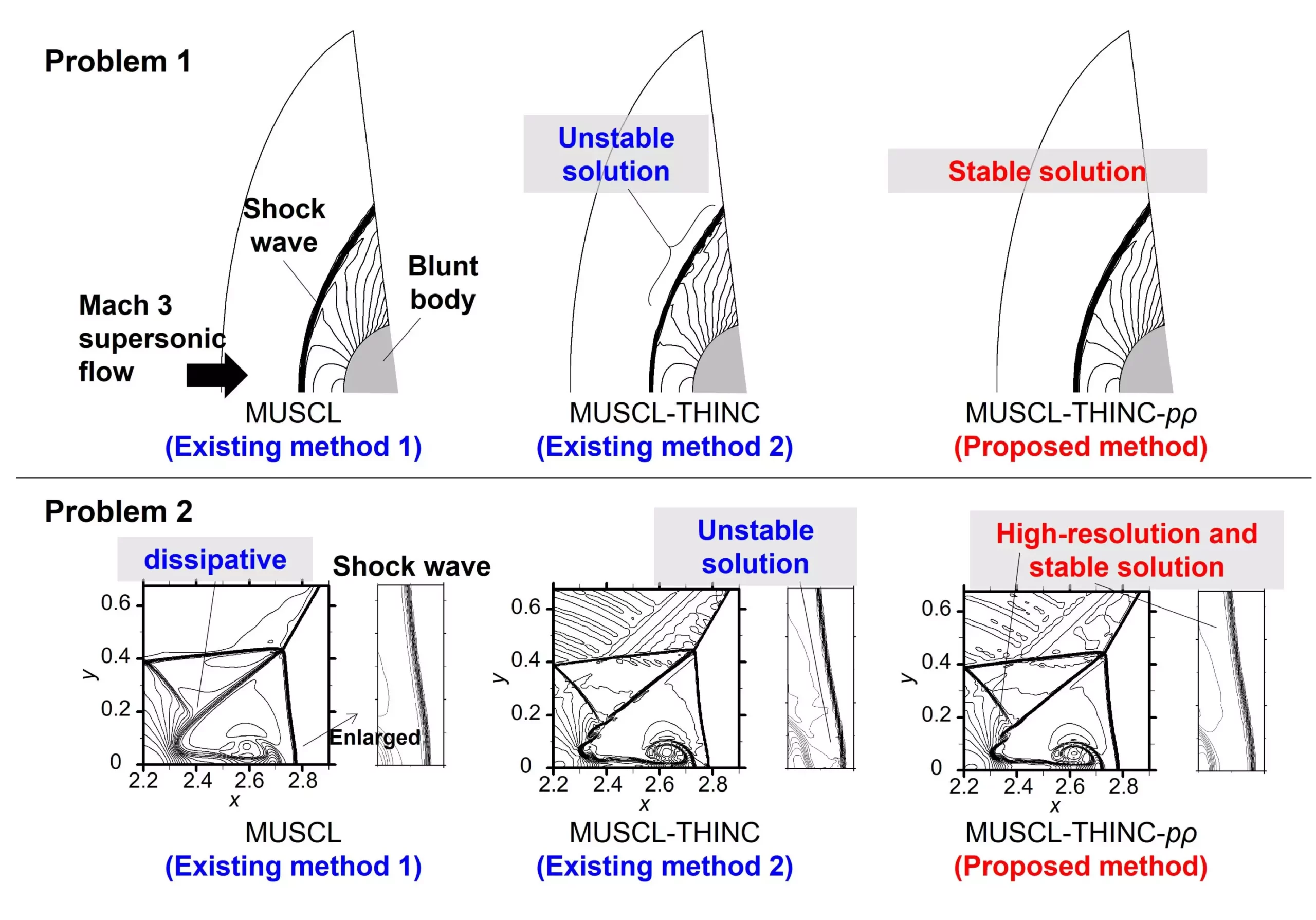In fluid dynamics, accurately simulating compressible flows poses significant hurdles, especially when it comes to handling shock waves and discontinuities. These rapid changes in density create intricate behavior that conventional approaches often fail to capture accurately. The quest for precision in numerical simulations has led to the exploration of various finite volume methods, among which the Monotonic Upstream-Centered Schemes for Conservation Laws (MUSCL) method has stood out. However, as recent advancements demonstrate, even the well-regarded MUSCL method has its limitations, often leading to detrimental numerical dissipation amid complex flow conditions.
The latest endeavor in this field, spearheaded by a team of dedicated scientists, seeks to bridge the existing gap in computational methodologies. Their newly developed hybrid scheme named T-MUSCL combines the strengths of MUSCL and another innovative method, Tangential Hyperbolic Interface Capturing (THINC). This marriage of techniques opens new avenues for precise and robust simulations, serving as a beacon of hope for both academic researchers and engineering practitioners.
The Framework Behind T-MUSCL
At its essence, the T-MUSCL scheme is a robust and flexible tool designed for both steady and unsteady single-phase compressible flow simulations. By leveraging the existing framework of MUSCL while introducing THINC, the researchers have optimized the accuracy with which shock waves can be captured. The novel scheme balances the nonlinearity of physical phenomena with the reconstruction process required for simulations, enabling it to effectively resolve both weak and strong shocks—a feat that the conventional MUSCL struggles to achieve.
One of the critical components that elevate T-MUSCL is its use of two carefully selected parameters: a nonlinearity-weighted parameter and a slope-ratio-weighted parameter. By tuning these parameters, the researchers significantly improved the scheme’s ability to deliver high-resolution simulations. This means researchers can expect fewer errors and more accurate representations of extremely weak and moving shock waves—an advancement that has proven elusive with traditional MUSCL methods.
Implications for Real-World Applications
The implications of this research are profound, especially for industries reliant on highly accurate simulations, such as aerospace and mechanical engineering. The capability to easily integrate this hybrid scheme into existing algorithms without imposing additional complexity is particularly noteworthy. This opens the door for engineers and researchers alike to adopt T-MUSCL without overhauling established workflows.
The development is significant, considering that current methods often generate excessive numerical dissipation during simulations, particularly under complex flow conditions. The enhanced convergence behavior provided by T-MUSCL in steady two-dimensional blunt body problems signifies a leap forward for computational fluid dynamics. It exemplifies how innovative approaches can reshape practices and elevate engineering solutions across various sectors.
Future Research Directions and Aspirations
Looking ahead, the research team led by Keiichi Kitamura is focused on applying their T-MUSCL method to tangible engineering problems. This transition from theoretical advancements to practical applications marks an exciting turning point for the group. As they aim to foster a deeper understanding of compressible flow dynamics and shock wave interactions, Kitamura’s vision becomes clear: an ambition not only to enhance numerical simulations but also to expedite technological advancements across multiple industries.
In the highlighted study, researchers express optimism that their method will resonate well with the broader community engaged in fluid dynamics research. By simplifying complex expressions while maintaining high accuracy and robustness, T-MUSCL is poised to democratize access to advanced simulation techniques, allowing a more extensive range of scholars to engage in cutting-edge research.
Connecting Academia with Engineering Practice
This development has critical significance beyond just academic curiosity. Industry practitioners often grapple with a disconnect between sophisticated academic models and pragmatic engineering solutions. By providing a method that bridges this gap, the T-MUSCL approach embodies the potential for real-world impact. Story after story in engineering centers on the importance of efficient yet precise simulation methods, as they directly influence design principles and the performance of engineering systems.
With a clear pathway set out for T-MUSCL’s implementation, there lies an opportunity for collaborative progress—bringing together academic inquiry with the practical challenges faced by engineers globally. This synergy could well be the catalyst for innovations that revolutionize not just the mechanics of flow but the industries built around understanding and optimizing those flows.
The strides made by the researchers at Yokohama National University signal an exciting new chapter in computational fluid dynamics, one that promises to deliver robust simulations equipped to tackle the increasingly complex demands of modern engineering. As this hybrid scheme garners attention and application, it holds the potential to propel both academic research and industrial application toward unprecedented advancements.

